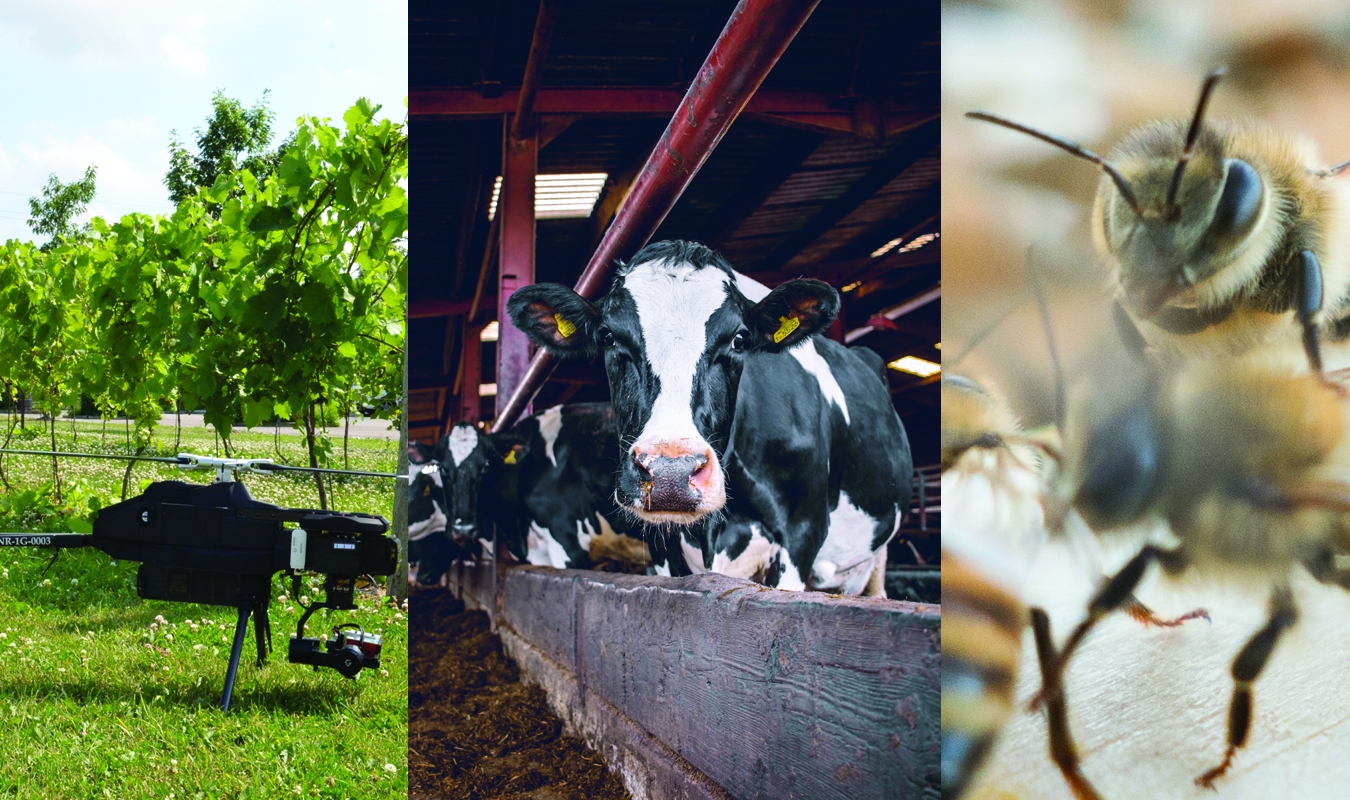
Smart Agriculture is for everyone — not just for farmers
By Vincent Guyonnet
Canada along with the rest of the world is facing the challenge of feeding a growing population while sparing more natural resources. On a global basis, the challenge is huge as we must contemplate how to feed an additional two billion people by 2050 while arable area will likely grow only by 5 per cent according to the Food and Agriculture Organization of the United Nations (FAO). Canada has a great role to play in this “Feed the world” challenge!
The Canadian Agriculture sector, in addition to being a vibrant sector feeding local communities, plays an important role on a global basis. Canada is the 5th largest agricultural exporter in the world. In addition to maple syrup, a true Canadian brand, Canada is also the world's largest exporter of flaxseed, pulses, oats and durum wheat and canola. Consider that 90 per cent of the production of canola, a great Canadian success story, is exported as canola seeds, canola oil or as an ingredient for livestock feeds. But the production of this cash crop like that of many other agricultural products is not without its challenges. Farmers around the country are facing more and more the pressure to produce more with less, reducing the use of pesticides, antibiotics and other tools currently available. But they are not without options as the digitalization of agriculture, also referred to as smart agriculture, provides some valuable relief.
Today, farmers diligently collect data from their fields, crops, trees and animals to monitor their progress and ensure the wellbeing of both animals, plants and the land. But in many cases, the data collection still relies on observations and manual recording, making the computation and analysis of the data more cumbersome. Data collected represent a wealth of information currently underutilized by farmers. Changes are needed as the average farm will generate 4.1 million data points by 2050 through the use of wireless sensors and other internet of things (IoT) devices. Smart Agriculture is defined for its use of Big Data to develop models that drive the best decisions in terms of the amount of water, seeds or fertilizers to be applied to a minute section of a field or of the amount of feed to provide a dairy cow.
Artificial vision, one of the great applications derived from artificial intelligence (AI), offers tremendous opportunities throughout the food value chain. In the fields, AI combined with drone and other automated vehicle technologies has been applied for the detection and identification of weeds, insects and other pests to allow farmers to time perfectly their intervention to control these problems, saving some valuable time, efforts and resources. Through its analytical power to detect trends, AI assists farmers to identify the ideal time to provide treatments to fields while reducing the impact on bees who play such a great role as pollinators. Smarter agriculture is all about optimizing the use of resources to ensure the best results with the least impact on the planet. Off the farms, artificial vision is used now to grade at record speed agricultural products like apples, meat or eggs, ensuring that only top-quality products reach the shelves at retail.
Through the use of remote sensors, GPS and other Internet of Things (IoT) devices, AI is also used to identify the specific needs to improve the fertility of soils, predict production yield and optimal time for harvest. A local partnership with Huawei Canada in Southern Ontario recently helped the Henry of Pelham Family Estate Winery to improve its yield and reduce its costs by providing advance warning about the health of its plants and prevent diseases. “Reliable high-speed Internet and the smart solutions that strong digital infrastructure enables will help Canada’s economy recover and thrive through the current crisis and COVID-19. Smart agriculture will be a big part of that,” says Chris Pereira, Senior Director of Public Affairs at Huawei Canada. AI is also assisting researchers to fast-track the selection of the most productive and drought-resistant plants to help us adapt to climate change. AI is used to train machines to calculate at record speed the number of flowers on a picture and facilitates the optimum selection of plants for breeding purposes. Another application developed by Huawei Technologies helps farmers monitor closely the reproductive cycle of cows and improve the conception rate and boosts productivity by about 7 per cent.
There are so many options for Smart Agriculture that our only limitation at this time is really our ability to invest sufficient resources in this area. Unlike fields like communications, banking or the retail sector, the digital transformation of agriculture has been lagging behind. We need more research in Smart Agriculture and more collaboration between academia, government and the private sector to leverage from the strengths and expertise that each party will bring to the table.
The biggest value of Artificial Intelligence to agriculture is the analysis of real time data to make predictions and assist farmers in their day to day operations. But the large amount of data on weather, temperature, moisture, the presence of insects and other pests collected via remote sensors requires huge computational analytical capabilities available mostly through remote servers and Cloud computing. It is therefore critical for farming communities to have access to the best possible digital network to handle quickly this continuous flow of data. So, in addition to investing to develop Smart Agriculture applications, we must also invest to improve our rural connectivity. Data is of great value only if it can be analyzed quickly and used to decide on the best immediate course of action.
Connecting rural and remote communities has been a core competency of Huawei, from its roots in China through the development of wireless networks on the African continent over the past 2 decades to connecting remote communities in the Canadian great North for the past 10 years. Combined with its world leading research, technology and solutions, a company like Huawei Canada can assist us to ensure that all the smart agriculture applications developed in Canada will actually be applied in Canada. If we can accelerate the implementation of Smart Agriculture in Canada, we will produce more food with less impact on our environment – and in the end, everybody wins!
Vincent Guyonnet is the Managing Director of FFI Consulting, a firm dedicated to maximizing the role of animal source foods to human nutrition and food security, including the use of new digital technologies.
Photo of Cow: Kirk Will, Unsplash







